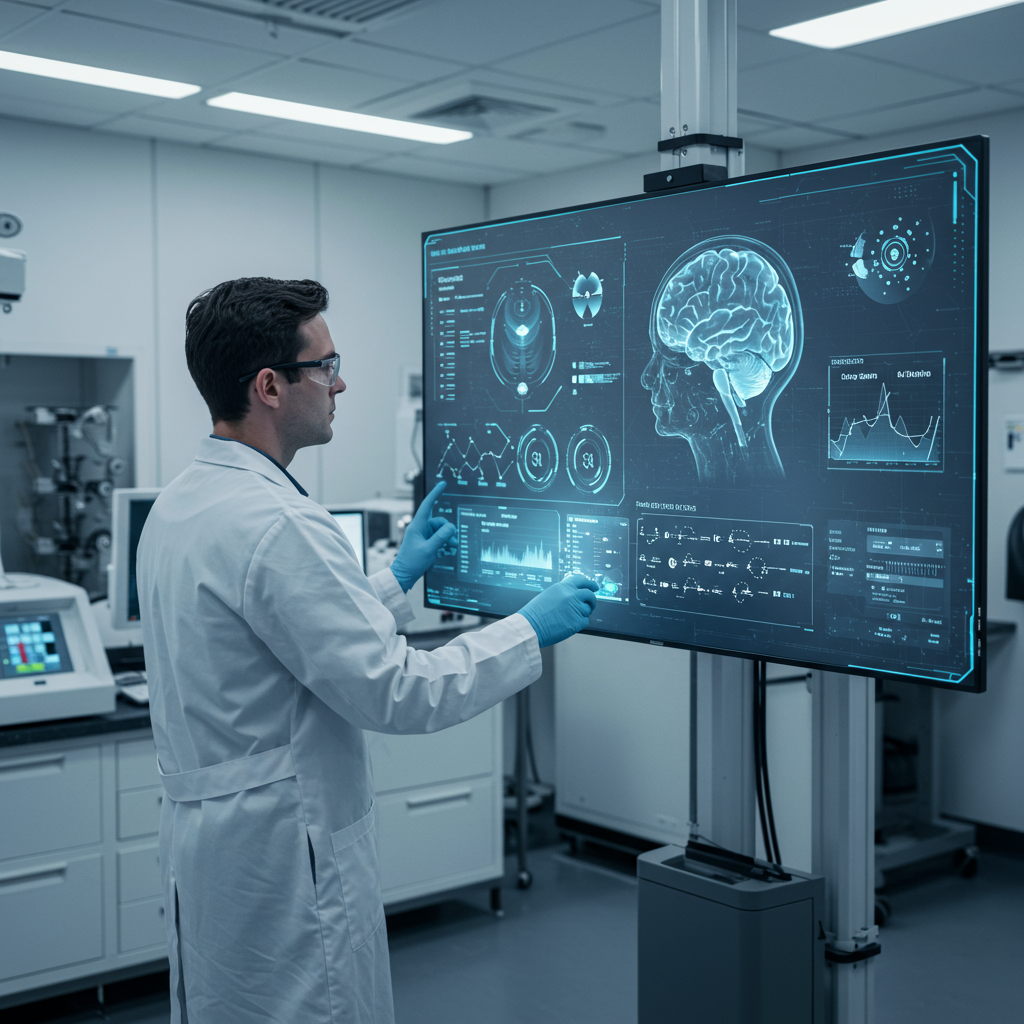Are you aging faster than your birth certificate suggests? What if a single image of your brain could reveal the actual pace of your biological aging and predict your risk for conditions like dementia years in advance? Scientists have now developed a groundbreaking tool that does just that, potentially offering a critical window for interventions before symptoms even appear. This innovation marks a significant step toward understanding and potentially influencing how gracefully we enter our later years.
Every high school reunion offers a stark reminder: aging is not just about the number of years you’ve lived. Some individuals remain sharp and active well into their senior years. Others face physical and mental decline much earlier than expected. This difference highlights the distinction between chronological age and biological aging rate.
“The way we age as we get older is quite distinct from how many times we’ve traveled around the sun,” explains Ahmad Hariri, a psychology and neuroscience professor at Duke University. Understanding this individual pace of aging is crucial. It’s a more accurate indicator of future health trajectories than simply counting birthdays.
A New Way to Measure Your Pace of Aging
researchers at Duke University, Harvard University, and the University of Otago in New Zealand have created a freely available tool designed to measure how quickly someone is aging. This is achievable with just a snapshot of their brain using a standard MRI scan. Named DunedinPACNI, this tool estimates a person’s biological aging rate.
Unlike some previous “aging clocks” that compare individuals of different ages at a single point in time, the DunedinPACNI tool was developed using data from a unique longitudinal study. This study, known as the Dunedin Study, has tracked over 1,000 individuals born in New Zealand in the early 1970s throughout their lives.
For nearly two decades, Dunedin Study researchers meticulously tracked participants’ health. They monitored a wide array of biological markers. These included blood pressure, body mass index, glucose and cholesterol levels, lung and kidney function, and even dental health indicators like gum recession. By observing the changes in these markers over time, they generated a highly accurate score representing each individual’s actual pace of biological aging.
Training the Tool with Longitudinal Data
The power of the DunedinPACNI tool comes from this rich, long-term dataset. Researchers trained the algorithm to estimate this empirically measured pace of aging. It learned to predict this score using only information extracted from a single brain MRI scan. These scans were collected from 860 participants in the Dunedin Study when they were 45 years old.
The goal was to create a measure of aging speed. This measure needed to be distinct from environmental or historical factors tied to specific generations. Using longitudinal data allowed them to focus specifically on the process of aging unfolding within individuals.
Following its initial training, the DunedinPACNI tool underwent rigorous testing. Researchers applied it to analyze brain scans from various other datasets. These included diverse populations across the United Kingdom, the United States, Canada, and Latin America. This validation process demonstrated the tool’s robustness. It accurately captured aging rates across different demographics, including variations in income, race, and geographic location. This suggests it identifies a fundamental biological aging process.
Predicting Dementia Risk and Cognitive Decline
The results of the validation studies were compelling. Individuals flagged by the DunedinPACNI tool as having a faster pace of aging consistently showed poorer performance on cognitive tests. Their brain scans also revealed faster shrinkage in the hippocampus. This brain region is absolutely vital for memory function.
Crucially, the tool showed significant predictive power for future cognitive health. In one analysis using scans from 624 individuals aged 52 to 89, those whose scans indicated faster aging upon entering the study faced substantial risks. They were found to be 60% more likely to develop dementia in the years that followed. Furthermore, these “fast agers” began experiencing memory and thinking problems sooner than their peers who were aging more slowly according to the scan.
Professor Hariri described the team’s reaction to these initial predictive findings: “our jaws just dropped to the floor.” The strength of the predictions derived from a single scan taken decades earlier was remarkable.
The Far-Reaching Impact on Overall Health
The implications of the DunedinPACNI findings extend beyond brain health. The research team also discovered strong links between faster brain aging scores and overall physical health decline. Individuals identified as aging faster by the tool were more likely to experience frailty. They were also more susceptible to common age-related health problems. These included serious conditions like heart attacks, strokes, and lung disease.
The statistics were sobering. People with faster aging scores were 18% more likely to receive a diagnosis for a chronic disease within the next several years. This was compared to individuals with average aging rates. Even more significantly, the fastest agers faced a 40% higher likelihood of mortality within that same timeframe. This highlights the compelling connection between the aging process occurring in the brain and the aging of the body as a whole. “The link between aging of the brain and body are pretty compelling,” Hariri noted.
A Window for Proactive Health Strategies
This new tool arrives at a critical time. The global population is living longer, which unfortunately means more people will face chronic age-related diseases, particularly dementia. The economic burden of conditions like Alzheimer’s is already immense and projected to skyrocket in the coming decades.
Effective treatments for Alzheimer’s and other neurodegenerative diseases have proven challenging. Many current interventions primarily manage symptoms. They often fail to halt or reverse the disease progression. A key reason for this might be timing. Treatments are typically started after significant damage has already occurred in the brain. As Hariri starkly puts it, “Drugs can’t resurrect a dying brain.”
The DunedinPACNI tool offers a potential solution to this problem. By identifying individuals with an accelerated aging pace, and thus higher risk, potentially decades before symptoms become apparent, it creates a crucial window for action. This early warning could empower people to make meaningful lifestyle adjustments. Improvements in diet, exercise, sleep, and managing stress could potentially slow their biological aging rate. Intervening while someone is still relatively healthy offers the best chance to mitigate future disease risk.
Fueling Future Research and Personalized Medicine
Beyond its potential clinical applications for early risk prediction, the DunedinPACNI tool is also a powerful asset for researchers. It can help scientists better understand why certain factors influence aging. For example, researchers can now use this measure to study how sleep patterns, mental health conditions, or specific lifestyle choices impact the pace of brain aging. This could unlock new insights into the underlying mechanisms of aging and age-related diseases.
While immensely promising, researchers emphasize that DunedinPACNI is currently a research tool. Further work is needed to make it widely applicable in everyday healthcare settings. This includes gathering vast amounts of data to establish normative reference charts across different age groups. However, the development represents a major leap forward. It provides a dynamic measure of the biological aging process reflected in the brain. This is something aging clocks based on other biomarkers, like blood tests, may not fully capture.
The researchers envision this tool becoming a key instrument for forecasting disease risk, especially for Alzheimer’s and related dementias. It could also help researchers better track the progression of these diseases. The potential to identify high-risk individuals early could fundamentally change how we approach preventative healthcare and the development of future treatments for age-related decline.
Frequently Asked Questions
What is the DunedinPACNI tool and what does it measure?
The DunedinPACNI is a new research tool developed by scientists at Duke, Harvard, and the University of Otago. It measures an individual’s biological aging rate, also known as their “pace of aging,” using data from a single brain MRI scan. Unlike previous methods that might estimate a person’s brain age as a static number, DunedinPACNI estimates how quickly their brain and body are biologically aging over time, independent of their chronological age.
Where was the research for this brain aging tool conducted or published?
The research was conducted by scientists at Duke University (Durham, N.C.), Harvard University, and the University of Otago (New Zealand). The tool’s development was based on extensive longitudinal data from the long-running Dunedin Study, which tracked New Zealanders since birth. The findings were published in the scientific journal Nature Aging on July 1, 2025.
Can I get this brain scan now to measure my own aging rate and disease risk?
Currently, the DunedinPACNI tool is primarily a research instrument. While it has shown powerful predictive capabilities in studies, it is not yet widely available for routine clinical use in healthcare settings. Researchers need to perform more validation and collect extensive normative data across various populations before it can become a standard diagnostic or predictive tool. However, its development holds significant promise for future personalized health assessments and early interventions.
The researchers who developed the tool have filed a patent application related to their work. This highlights its potential future clinical relevance.
This research was supported by funding from institutions including the U.S. National Institute on Aging, the UK Medical Research Council, and the New Zealand Health Research Council.


